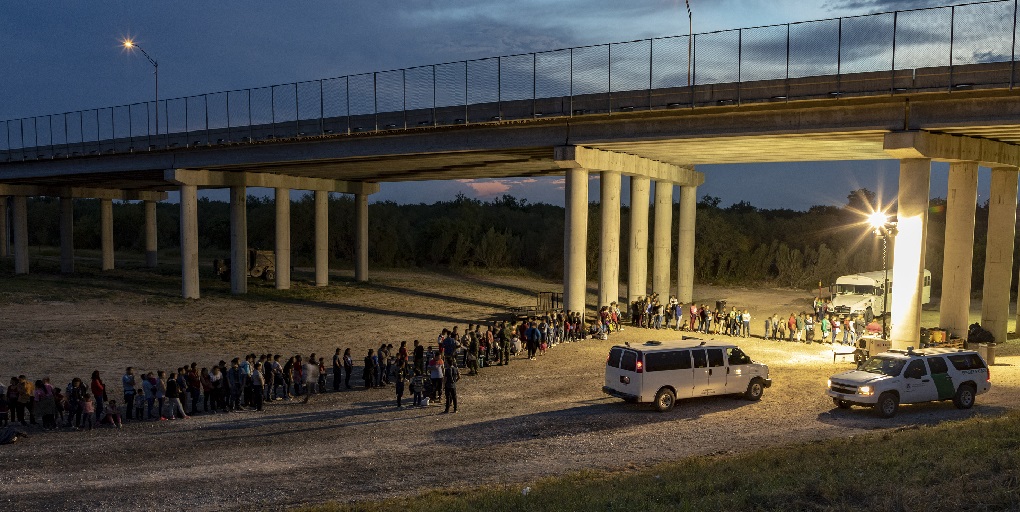When asylum seekers arrive in the United States, so long as they are not rapidly deported or expelled, the government is generally supposed to issue them a “Notice to Appear” (NTA). This charging document formally begins the immigration court process.
But a new report from NBC News indicates that, based on records they have received, nearly 600,000 migrants who crossed into the United States and were released at the border since March 2021 were not given an NTA when they entered. This has left them without court dates, which could make it harder for them to navigate the complicated asylum process. However, the report leaves out important context as to why releases occurred in the first place.
The NBC report analyzed data on “family units” (parents arriving with their children) released at the border through two U.S. Customs and Border Protection (CBP) policies started in 2021. These policies were implemented in an attempt to protect children from some of the horrors they faced while detained in CBP facilities under the Trump administration.
The first program was the use of a new form called a Notice to Report, beginning in late March 2021. Families were given a document that instructed them to report to any U.S. Immigration and Customs Enforcement (ICE) office, usually within 60 days, where they would ostensibly be given an NTA
Approximately 94,000 family members were released under the NTR program. Ultimately, the program was fraught with problems. While still in the midst of a global pandemic, migrants were asked to stand in enormous lines outside ICE field offices without any appointment. This process was chaotic, as ICE was still operating under COVID restrictions and unable to handle the volume. Many migrants given NTRs were not able to check-in as required.
In an effort to address problems with the NTR process, in late 2021 the government attempted to mail tens of thousands of NTAs to migrants who were given NTRs. The effort, referred to as “Operation Horizon,” was also riddled with problems, as migrants’ addresses had changed or were not adequately collected at the border. The NTR program was ended in November 2021 after only six months of use.
The second program is commonly referred to as “parole plus ATD.” This program was first initiated in July 2021. It allowed for migrant families to enter the United States under parole—a common practice used at various times to respond to crises that lead to increased numbers of people at our borders. The head of the family was then also enrolled in an Alternative To Detention (ATD) program, which allowed ICE to track the family through a form of electronic monitoring.
Both programs led to problems for individuals seeking asylum. Without a charging document filed with a court, an asylum seeker cannot file an application for asylum with the court. Instead, they technically can file the application with U.S. Citizenship and Immigration Services. But often, people did not know this and missed the critical one-year deadline to file the application, leaving them ineligible for asylum.
What reporting on the programs largely left out, however, was what initiated them in the first place. The programs were created to address the serious dangers of overcrowding in temporary CBP detention sites. The first program began just over a year after the deadliest year for children in CBP custody. Six children died in CBP custody between September 2018 and May 2019. Children and monitors reported inhumane, unsanitary, and crowded conditions in CBP holding facilities where children were kept for weeks at a time.
In the first two months of the Biden administration, rising numbers of unaccompanied children in Border Patrol custody led to the increased risk of yet another tragedy occurring to a child at the border. By late March 2021, when the NTR program began, there were nearly 5,800 children locked in Border Patrol custody on a daily basis. It was against this backdrop that the Biden administration attempted to address increased numbers of families with children arriving at the border. Had they been successful, the programs would have allowed for the quick processing of families and reduced their time in CBP custody.
However, the programs revealed much larger cracks in our immigration system—particularly for asylum seekers. Rapid processing at the border can only offer a short-term band-aid for our broken immigration system. Only sustained long-term investment in our humanitarian protection system can avoid the need for rushed programs with harmful side effects.
FILED UNDER: Alternatives to Detention, Customs and Border Protection


